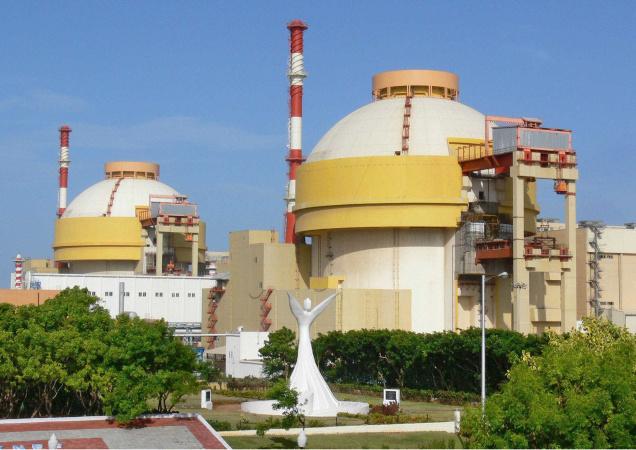Chennai, Oct 22: India's atomic power plant operator Nuclear Power Corporation of India Ltd (NPCIL) Tuesday generated 160 MW power at its first unit in Kudankulam Nuclear Power Project (KNPP), said a senior official.
"Unit 1 synchronisation with the power grid was done at 2.45 a.m. on Tuesday, generating 75 MW of power. We then increased the power output to 160 MW and maintained that for around two hours before bringing down the power generation," R.S.Sundar, site director, KNPP told IANS.
According to him, the unit will generate 300 MW power in two/three days.

"The power generation beyond 400 MW will happen with the permission of AERB (Atomic Energy Regulatory Board). They have asked us to do so," Sundar said.
The NPCIL is setting up two 1,000 MW Russian reactors at Kudankulam in Tirunelveli district, around 650 km from here. The total outlay for the project is over Rs.17,000 crore.
KNPP is India's first pressurised water reactor belonging to the light water reactor category.
The first unit attained criticality, which is the beginning of the fission process, for the first time in July 2013.
In August, the AERB gave its nod to KNPP to raise the reactor power levels to 50 percent and synchronisation of the unit with the power grid.
The NPCIL earlier said it would connect the first unit to the grid end-August, generating 400 MW power.
But that did not happen due to two condenser valve problems which seemed to have got stuck.
Reacting to the news of connecting the KNPP first unit to the grid G.Sundarrajan of NGO Poovulagin Nanbargal told IANS: "This is one more scene in the 69-month Kudankulam reactor commissioning drama."
He said: "NPCIL had earlier said it would connect the unit to the grid generating 400 MW but now they say the unit was synchronised with the grid at 75 MW. This is farce."





Comments
Add new comment